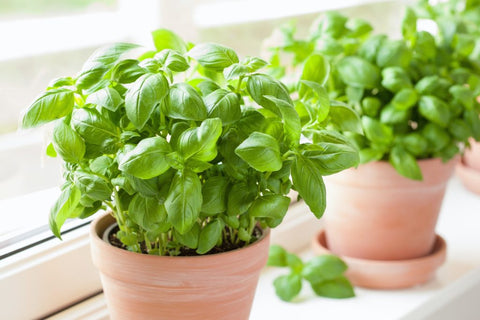Carrots, with their vibrant color, sweet flavor, and crunchy texture, are a versatile and nutritious addition to any garden. Growing these root vegetables is a rewarding experience that allows you to enjoy the freshest produce right from your backyard. In this comprehensive guide, we'll take you through the step-by-step process of how to grow carrots successfully, from choosing the right varieties to harvesting crisp, homegrown delights.The following content also has some reference value for raised garden beds.

1. Selecting the Right Carrot Varieties
Choosing the right carrot varieties is the first step in ensuring a successful harvest. Consider factors such as size, shape, and color, as well as the specific growing conditions in your region.
Popular Carrot Varieties:
- Nantes: Sweet and cylindrical, ideal for containers and heavy soils.
- Danvers: Classic and versatile, suitable for a variety of soil types.
- Chantenay: Shorter and wider, perfect for clay soils and containers.
- Baby Carrots: Ideal for small spaces and quick harvests.
2. Preparing the Soil
Carrots thrive in loose, well-draining soil that allows their roots to develop freely. Follow these steps to prepare the optimal carrot bed:
Soil Type:
- Loose Texture: Ensure the soil is loose to a depth of at least 12 inches for unobstructed root growth.
- Well-Draining: Choose well-draining soil to prevent waterlogged conditions.
Soil Amendments:
- Organic Matter: Incorporate organic matter such as compost to improve soil fertility.
- Avoid Fresh Manure: Avoid using fresh manure, as it can cause forked or deformed carrots.
pH Level:
- Neutral pH: Aim for a slightly acidic to neutral pH level (6.0-7.0) for optimal carrot
- Test the Soil: Use a soil test kit to determine the current pH level.
3. Sowing Carrot Seeds
Knowing when and how to sow carrot seeds is crucial for a successful crop. Follow these guidelines for sowing your carrot seeds:
Timing:
- Cool Seasons: Carrots prefer cool seasons, so sow seeds in early spring or late summer for a fall harvest.
- Avoid Extreme Heat: Avoid sowing in the peak of summer to prevent germination issues.
Depth and Spacing:
- Shallow Planting: Plant seeds about 1/4 to 1/2 inch deep.
- Thin Seedlings: Once seedlings emerge, thin them to ensure proper spacing (about 2 inches apart).
Watering:
- Consistent Moisture: Keep the soil consistently moist to encourage germination.
- Avoid Crusting: Mulch the soil to prevent crusting, which can impede seedling emergence.
4. Caring for Carrot Seedlings
Once your carrot seedlings emerge, providing the right care ensures robust growth and healthy roots.
Thinning Seedlings:
- Early Thinning: Thin the seedlings when they are a few inches tall to allow adequate spacing.
- Use Scissors: Avoid pulling out seedlings to prevent disturbing nearby roots.
Weeding:
- Regular Weeding: Keep the carrot bed weed-free, as competition can stunt carrot
- Hand Weeding: Use hand weeding tools to avoid damaging delicate carrot
Watering:
- Consistent Moisture: Ensure consistent moisture throughout the growth period.
- Drip Irrigation: Consider drip irrigation to deliver water directly to the soil without wetting the foliage.

5. Dealing with Common Carrot Pests and Diseases
Vigilance against common pests and diseases is essential to protect your carrot crop.
Pests:
- Carrot Fly: Use floating row covers to prevent carrot fly infestations.
- Aphids: Introduce beneficial insects like ladybugs to control aphid populations.
Diseases:
- Carrot Rust Fly Larvae: Rotate crops annually to minimize the risk of carrot rust fly larvae.
- Leaf Blights: Practice good garden hygiene to prevent leaf blights, including removing affected foliage.
6. Fertilizing Carrots
Providing the right nutrients at the appropriate times ensures healthy foliage and robust root development.
Fertilizer Application:
- Avoid Excessive Nitrogen: Excessive nitrogen can result in lush foliage but stunted roots.
- Side-Dressing: Side-dress with a balanced fertilizer once the carrot tops are 4-6 inches tall.
Organic Options:
- Compost Tea: Use compost tea as a natural and nutrient-rich fertilizer.
- Fish Emulsion: Apply fish emulsion for an organic source of nitrogen.
7. Harvesting Carrots
Knowing when and how to harvest carrots is crucial for achieving the best flavor and texture.
Timing:
- Maturation Time: Carrots typically mature in 60-80 days, depending on the variety.
- Check Size: Harvest when carrots reach the desired size, typically 1/2 to 3/4 inches in diameter.
Harvesting Technique:
- Loosen Soil: Gently loosen the soil around the carrot with a fork to prevent breakage.
- Pull Carefully: Grasp the carrot near the top and pull gently, allowing the root to slide out.
Storage:
- Remove Foliage: Trim the foliage, leaving about an inch, before storing carrots.
- Refrigeration: Store harvested carrots in the refrigerator for extended freshness.
8. Saving Carrot Seeds
For gardeners interested in seed saving, carrots are biennials, meaning they produce seeds in their second year. Follow these steps for saving carrot seeds:
Overwintering:
- Mulching: Mulch the carrot bed to protect plants during winter.
- Leave Some Plants: Allow some plants to overwinter and produce seeds in the second year.
Bolting and Flowering:
- Bolting Process: Carrots will send up flower stalks in their second year.
- Collect Seeds: Allow the flowers to develop into seed heads, then collect the seeds.
Storage:
- Dry Seeds: Dry the seeds thoroughly before storing them in a cool, dark place.
- Label Clearly: Label the seeds with the carrot variety and date of collection.

Conclusion
Growing carrots is a gratifying journey that rewards patience, care, and a bit of horticultural know-how. By selecting the right varieties, preparing the soil, sowing seeds with care, and providing proper maintenance, you can enjoy the simple pleasure of harvesting crisp, homegrown carrots. Whether you're a seasoned gardener or a novice with a green thumb, the process of growing carrots is an enriching experience that connects you to the natural cycle of plant life and the joy of reaping the fruits (or, in this case, roots) of your labor. So, roll up your sleeves, get your hands in the soil, and embark on the delightful journey of growing your own carrots – from seed to crunch.









